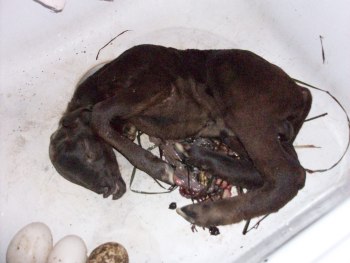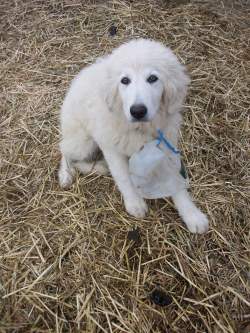 Our livestock guardian dog (who still doesn’t have a name!) is doing pretty well. She’s definitely got the right stuff- big bark, loves the sheep, weatherproof coat, and just lays around most of the day. But, right now, she is still incredibly SILLY- just like any four month old dog would be.
Our livestock guardian dog (who still doesn’t have a name!) is doing pretty well. She’s definitely got the right stuff- big bark, loves the sheep, weatherproof coat, and just lays around most of the day. But, right now, she is still incredibly SILLY- just like any four month old dog would be.
In general, she gets along well with the sheep, she likes them, and they don’t mind her. Their inter-species communication functions well on a basic level, they understand she means them no harm, and she seems to find them to be pleasant company. But where this breaks down is that she still wants to play like a young dog does, and she hopes they’ll want to as well! She has moments of high energy and exuberance, where she leaps about, grabs the sheeps’ body parts, and tries to get them to engage in a good old wrestle. Of course, another dog would gladly sign up for such a ruckus, but wrestling is just not in a sheep’s repertoire.
The adult sheep have been able to manage this so far, they just move away from her in irritation, or butt her to send her on her way. Though I’ve seen her tugging on their tails and ears, she hasn’t seemed to do damage to them. Her advances are purely good-hearted: I don’t see any hint of prey drive going on, she honestly does just want to play with her “friends” and she’s disappointed when they flee. But, this has not been good for the lamb. He tends to just hunker down and try to wait out the rough play. At first, she just made a few small tooth marks in him. But eventually, she bit him up good in the hock, and now he is lame. So, I had to make a separate section of the pen for his mother and him.
I’ve tried a few other things, with limited success. First, I tied an empty milk jug to her collar, with the idea being when she leaps and pounces, it’ll bounce and hit her in the face, providing enough of an irritant to slow her down. This actually worked well for a few days, she was terrified of the thing, and sat stock still for about 24 hours. But, now she’s used to it, and though I do think it makes her walk more carefully, it doesn’t slow her down that much.
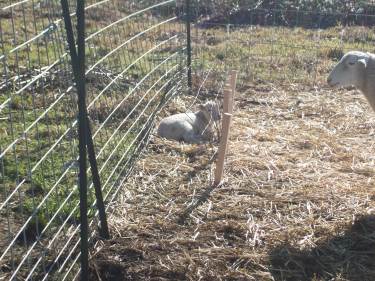 The second thing I tried was making a creep for the lamb to get into, that would keep the dog out. I made an open-ended tunnel out of a grid of wire, so that even if she did a bunker crawl in after him, he could exit the other end. I showed him this, and he seemed to “get it”- I often saw him sleeping in there, and the dog couldn’t do much to him. But, I the ewes kept wrecking the tunnel. They are shedding now, and are itchy, and they found that cramming their huge, pregnant bodies in there made for a splendid all-over scratching tube. 😛 But then they’d get stuck in there, and brute-force their way out, wreaking havoc with my petite lamb hut.
The second thing I tried was making a creep for the lamb to get into, that would keep the dog out. I made an open-ended tunnel out of a grid of wire, so that even if she did a bunker crawl in after him, he could exit the other end. I showed him this, and he seemed to “get it”- I often saw him sleeping in there, and the dog couldn’t do much to him. But, I the ewes kept wrecking the tunnel. They are shedding now, and are itchy, and they found that cramming their huge, pregnant bodies in there made for a splendid all-over scratching tube. 😛 But then they’d get stuck in there, and brute-force their way out, wreaking havoc with my petite lamb hut.
So, for how, he’s segregated so his leg can heal, poor guy. I have ordered 320 feet of electronet and a battery + solar panel charger. That should arrive next week, allowing me to re-configure the sheep and dog areas a little. Everyone can have more room, and I can separate out the soon-to-lamb ewes from the dog. Just in time, as they’re due the first week in March!
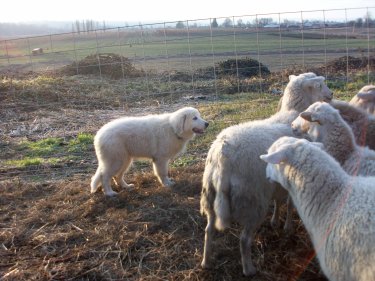 Here’s how I think it’s going to work integrating the LGD into the mix. I’m not confident that all will play out as planned. But I’ll have to be flexible and adjust the plan as I see how things are going, because I don’t really know how things will go!
Here’s how I think it’s going to work integrating the LGD into the mix. I’m not confident that all will play out as planned. But I’ll have to be flexible and adjust the plan as I see how things are going, because I don’t really know how things will go!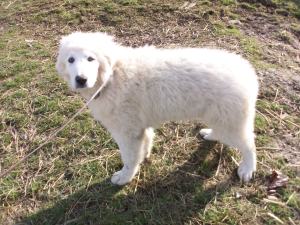 Well, here she is. Serendipitously, when I needed a livestock guardian dog (LGD), I was able to find one in a week’s time. My friends Sara Jo and John had a litter last fall, and this girl was the only one left. She is a four month old Maremma.
Well, here she is. Serendipitously, when I needed a livestock guardian dog (LGD), I was able to find one in a week’s time. My friends Sara Jo and John had a litter last fall, and this girl was the only one left. She is a four month old Maremma.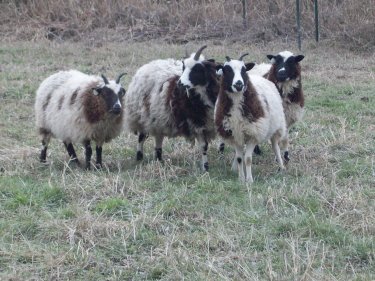 My friend Lynn has Jacob sheep. They are a “primitive” middle-Eastern breed known for their hardiness and self-sufficiency. Due to some recent changes in her lifestyle, she has less time for sheep now than she once did. So she gave us (for free!) four bred ewes to thin down her herd.
My friend Lynn has Jacob sheep. They are a “primitive” middle-Eastern breed known for their hardiness and self-sufficiency. Due to some recent changes in her lifestyle, she has less time for sheep now than she once did. So she gave us (for free!) four bred ewes to thin down her herd. I keep an eye on sheep listed on craigslist, mostly because it’s helpful to see the price ranges out there, and how cheap a buyer could get an animal compared to what I might be wanting to charge. My opinion of animals listed on craigslist is that they are generally “bottom of the barrel” quality; with a few listings maybe being lucky hits for nicer animals that people are just clearing out of their herd for acceptable reasons. In general, it is my opinion that breeders of good animals often don’t need to advertise, especially in a forum like craigslist, because demand for their animals is already pretty high via word-of-mouth.
I keep an eye on sheep listed on craigslist, mostly because it’s helpful to see the price ranges out there, and how cheap a buyer could get an animal compared to what I might be wanting to charge. My opinion of animals listed on craigslist is that they are generally “bottom of the barrel” quality; with a few listings maybe being lucky hits for nicer animals that people are just clearing out of their herd for acceptable reasons. In general, it is my opinion that breeders of good animals often don’t need to advertise, especially in a forum like craigslist, because demand for their animals is already pretty high via word-of-mouth.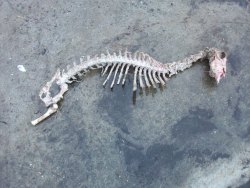 Well, it happened, and sooner than I wished: the coyotes snagged a sheep Thursday night. Of course I knew this was a possibility from the beginning, the coyotes howl in the valley every night, we see them occasionally, and I know neighbors lose livestock to them. They are definitely part of the fabric of this huge valley full of nature. Thus was the precaution of getting the llama. But, I had hopes that she’d be more effective.
Well, it happened, and sooner than I wished: the coyotes snagged a sheep Thursday night. Of course I knew this was a possibility from the beginning, the coyotes howl in the valley every night, we see them occasionally, and I know neighbors lose livestock to them. They are definitely part of the fabric of this huge valley full of nature. Thus was the precaution of getting the llama. But, I had hopes that she’d be more effective.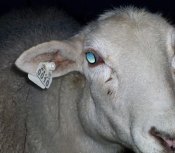 Here is the rest of the story on my final decision-making regarding scrapie programs. It turns out there is a lot written on scrapie and both the NSEP and SFCP, the information is spread out all over the place and not easy to find or understand. At first, I didn’t understand that there are two programs, so I found the phone number for my state veterinarian’s office, dialed them up and naively said “hi, I need some information on enrolling in the scrapie program.” Fortunately, I was immediately connected to Stacy Wozniak, one of the NSEP/SFCP coordinators in our state, and she was immensely helpful, and patient with my long email lists of questions. When she didn’t know the answer to a question, she found the expert who did. Over a couple of months, we got all my questions answered, and I was finally able to make an educated decision on what I wanted to do! I should also mention that Stacy was supportive and did not push me towards either option, but rather let me draw my own conclusions on what was right for me.
Here is the rest of the story on my final decision-making regarding scrapie programs. It turns out there is a lot written on scrapie and both the NSEP and SFCP, the information is spread out all over the place and not easy to find or understand. At first, I didn’t understand that there are two programs, so I found the phone number for my state veterinarian’s office, dialed them up and naively said “hi, I need some information on enrolling in the scrapie program.” Fortunately, I was immediately connected to Stacy Wozniak, one of the NSEP/SFCP coordinators in our state, and she was immensely helpful, and patient with my long email lists of questions. When she didn’t know the answer to a question, she found the expert who did. Over a couple of months, we got all my questions answered, and I was finally able to make an educated decision on what I wanted to do! I should also mention that Stacy was supportive and did not push me towards either option, but rather let me draw my own conclusions on what was right for me.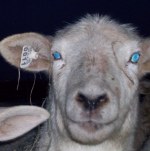 For the last several months, I’ve been reading up on the subject of scrapie in sheep, and the government-mandated programs established with the goal of eradicating scrapie in our country. First, for the uninitiated, scrapie is the form of Transmissible Spongiform
For the last several months, I’ve been reading up on the subject of scrapie in sheep, and the government-mandated programs established with the goal of eradicating scrapie in our country. First, for the uninitiated, scrapie is the form of Transmissible Spongiform  After last Thursday’s flood, our sheep are still “up top” in their little pen near the silo. They are getting tired of being up there, I’m sure. The timing was right to start graining the ewes, who are all getting big, so at least they have had something good happen in their little pen. When we’re home, we let them loose back there to graze.
After last Thursday’s flood, our sheep are still “up top” in their little pen near the silo. They are getting tired of being up there, I’m sure. The timing was right to start graining the ewes, who are all getting big, so at least they have had something good happen in their little pen. When we’re home, we let them loose back there to graze. I went out to feed the sheep at 6am this morning, and this ram lamb was dry and up running around. I found a second lamb dead, she never got the sack off of him, so he likely suffocated. She is a yearling ewe, this is her first lambing, so we can forgive her mistake. Hopefully she’ll do better next year. She seems to be caring for the live lamb well, I checked both her teats, and they are working just fine. We saw him nurse twice today, and they seem well bonded.
I went out to feed the sheep at 6am this morning, and this ram lamb was dry and up running around. I found a second lamb dead, she never got the sack off of him, so he likely suffocated. She is a yearling ewe, this is her first lambing, so we can forgive her mistake. Hopefully she’ll do better next year. She seems to be caring for the live lamb well, I checked both her teats, and they are working just fine. We saw him nurse twice today, and they seem well bonded.